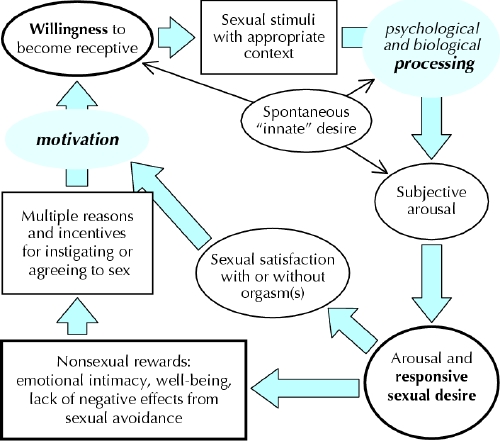
Fig. 1: Sex response cycle, showing responsive desire experienced during the sexual experience as well as variable initial (spontaneous) desire. At the “initial” stage (left) there is sexual neutrality, but with positive motivation. A woman's reasons for instigating or agreeing to sex include a desire to express love, to receive and share physical pleasure, to feel emotionally closer, to please the partner and to increase her own well-being. This leads to a willingness to find and consciously focus on sexual stimuli. These stimuli are processed in the mind, influenced by biological and psychological factors. The resulting state is one of subjective sexual arousal. Continued stimulation allows sexual excitement and pleasure to become more intense, triggering desire for sex itself: sexual desire, absent initially, is now present. Sexual satisfaction, with or without orgasm, results when the stimulation continues sufficiently long and the woman can stay focused, enjoys the sensation of sexual arousal and is free from any negative outcome such as pain. (Modified from Basson 2001,14 and published with the permission of the American College of Obstetricians and Gynecologists.)
